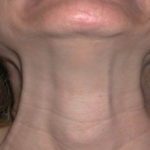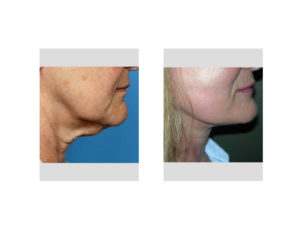One of the most common features of the aging process is sagging of the neck. When more advanced the central neck become a repository for loose skin, fat and and the appearance of platysmal banding. While platysmal banding is part of every aging neck, it is usually only seen well in thinner necks with less subcutaneous fat.

In the October 2016 issue of the journal Plastic and Recostructive Surgery an article was published entitled ‘Complete Platysmal Transection in Neck Rejuvenation : A Critical Appraisal’. The authors used a necklift technique of full skin undermining complete platysmal transection and midline platysmal approximation. In 150 consecutive necklift patients operated on over a four year period, results were compared at 3 and 12 months to determine persistence of anterior neck tightness. Patient satisfaction was 100% at three moths which fell to 76% at one year after surgery. Physician assessment, however, showed that only 50% had no anterior neck skin excess and 55% had no recurrence of platysmal bands at the one year assessment period.
There were no major complications with this necklift technique such as nerve damage, large hematomas or skin necrosis. The biggest drawback was the prolonged edema (swelling) that persisted in the neck often out to two months after surgery. Two-thirds (67%) of the patients reported having a ‘hard neck’ for a long time.
Overall this necklift technique has a high patient satisfaction rate even out at one year after surgery. An interesting question about platysmal bands is why they recur after being cut. The authors propose that it could be de to either inadequate muscle resection, muscle regeneration or restoration of motor nerve function. Regardless of the mechanism complete transection of the muscle does not permanently eliminate the development of platysmal bands. This study provides clinical evidence that it does not.

Dr. Barry Eppley
Indianapolis, Indiana


